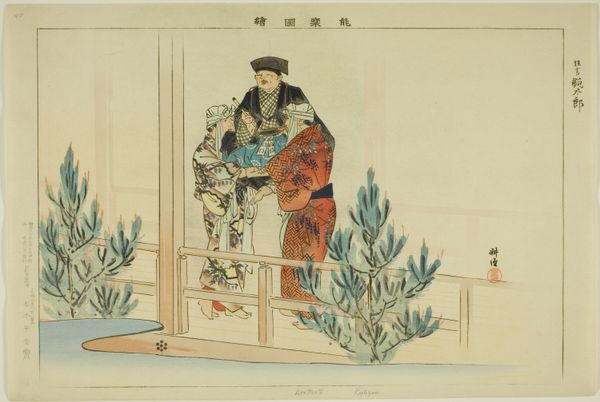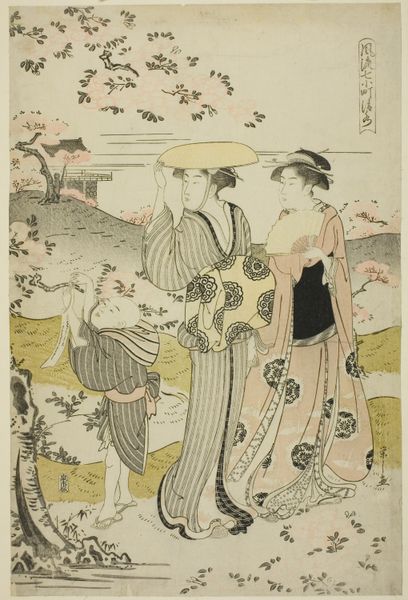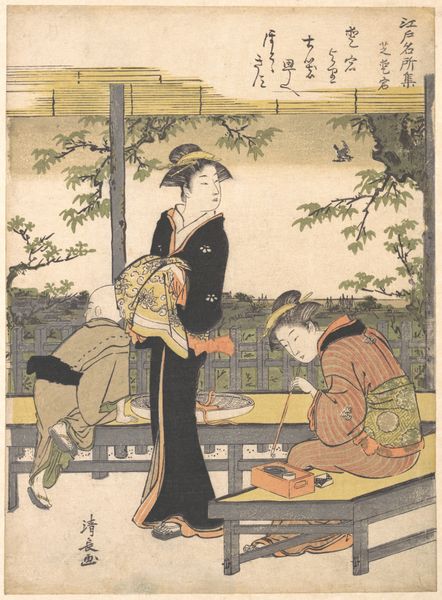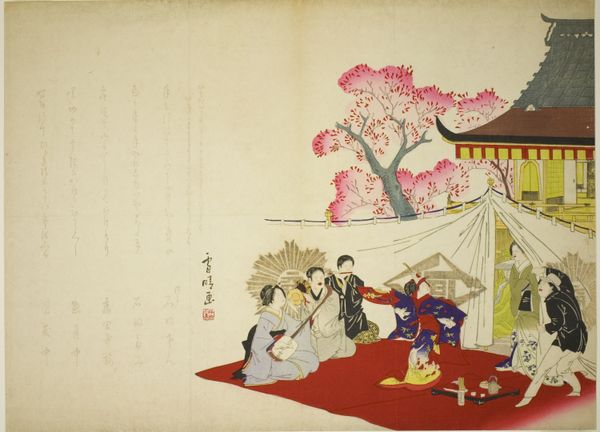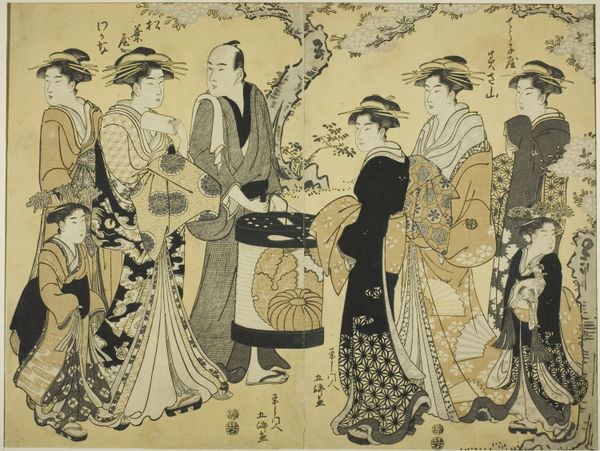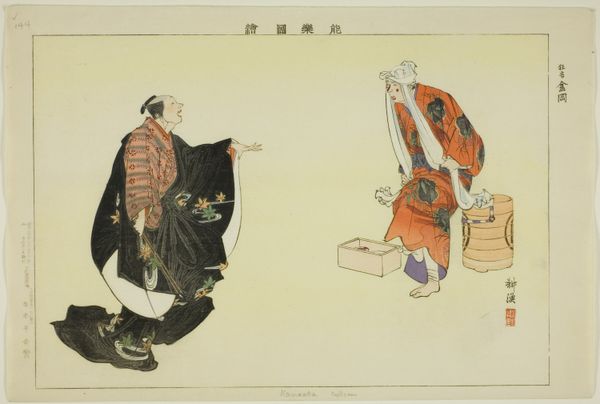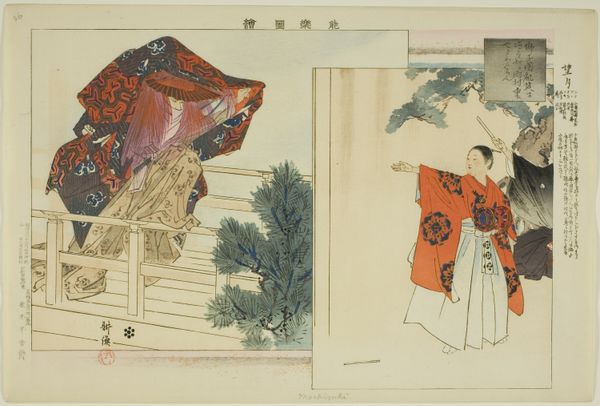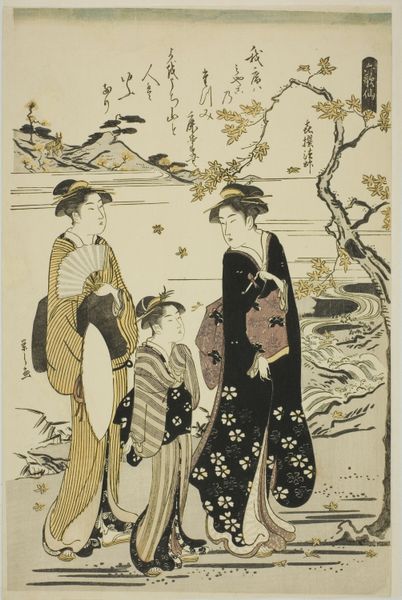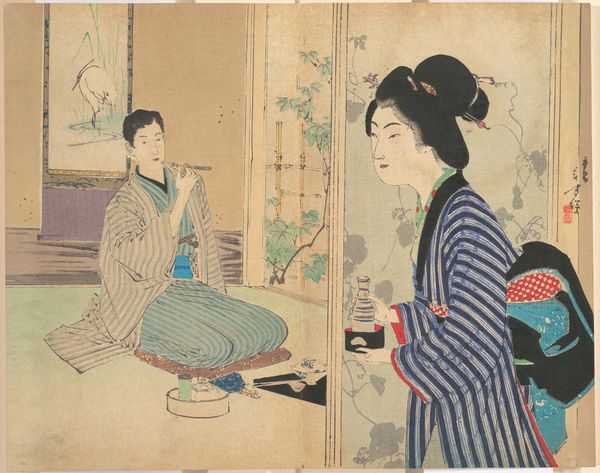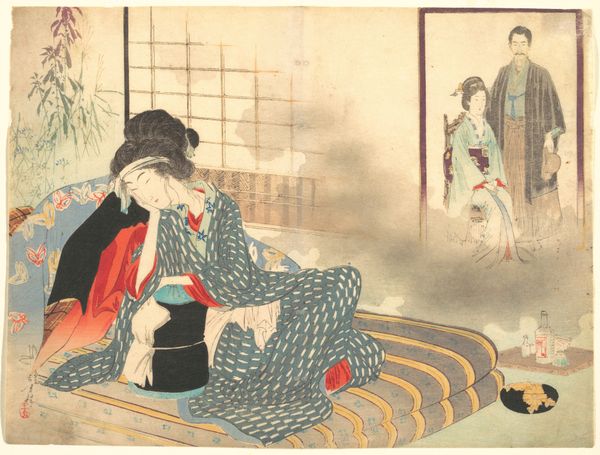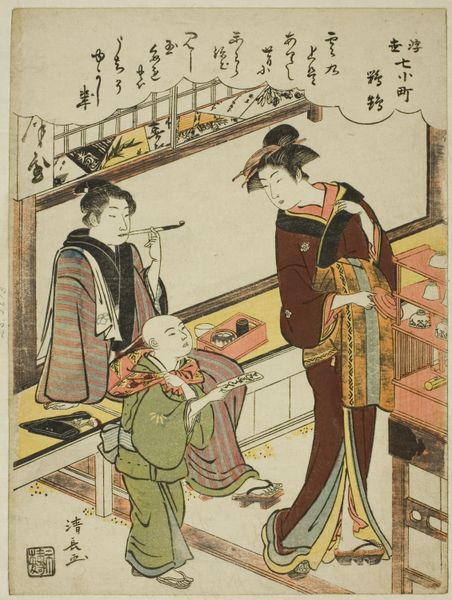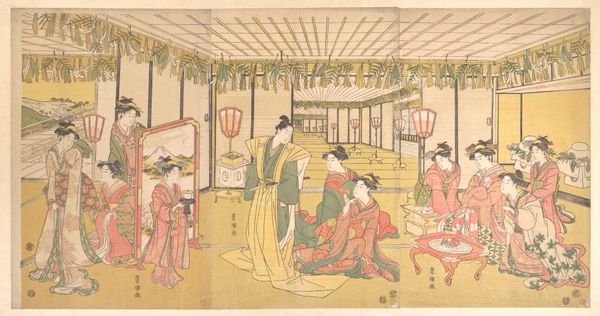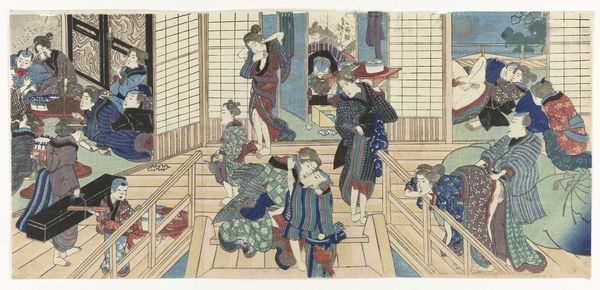
Dimensions: 8 1/2 x 11 3/8 in. (21.6 x 28.9 cm)
Copyright: Public Domain
Curator: Alright, let's talk about "The Demon Gold," or "Konjiki Yasha," by Mizuno Toshikata, a striking woodblock print created somewhere between 1893 and 1913, during the Meiji period. Editor: Immediately, I'm struck by this unsettling juxtaposition of a seemingly mundane interaction against the almost spectral scene within that circular inset... it feels like peering into a turbulent subconscious. Curator: I think that visual jolt speaks to Toshikata's gift for layering narratives. The print juxtaposes tradition with the rapidly Westernizing Japan of that era. Notice the Western suit and bowler hat on the man, a clear indicator of that cultural shift. Editor: Indeed. The suit symbolizes the encroachment of Western values, perhaps even a new type of materialism. That the female figure is in traditional garb emphasizes this tension—but her expression suggests a kind of defiance too. Curator: It’s said that Ukiyo-e artists were depicting modern life during this period by mirroring these conflicts, and with a touch of melancholy, right? So is this piece hinting at moral decay with a circular portrait? It's really unusual, at least to me. Editor: The circular frame does a few things. It isolates the central figure of study, almost like a specimen. Then that scarlet hue, shrouding the woman, screams passion or maybe concealed shame, a powerful beacon against the print's otherwise pastel and earthier palette. Think about scarlet women in literature or historic folktales... what might that reference in a modernized, evolving Japan? Curator: Well, I didn’t imagine her cloaked like that until now. Good point. But does this cloaked figure have an alibi, considering the abandoned travel objects down in the corner, too? This really does give me a symbolic weight here: a suggestion of hidden secrets or journeys undertaken, all shadowed by moral or ethical compromises. Editor: That abandoned baggage! Yes, they ground the 'portrait within a portrait' effect, reminding us of lived reality that it hovers above... That’s why symbols become timeless, eh? They become keys to interpreting not just art, but society itself, mirroring the eras it transcends. Curator: Precisely. Mizuno’s blending of East and West techniques and imageries encourages endless questions; a single print reflecting a world caught between then and now. Editor: So true! Makes you wonder, if you could speak to the artist today, what hidden detail would *they* illuminate about a narrative that seems more and more relevant each viewing?
Comments
No comments
Be the first to comment and join the conversation on the ultimate creative platform.
